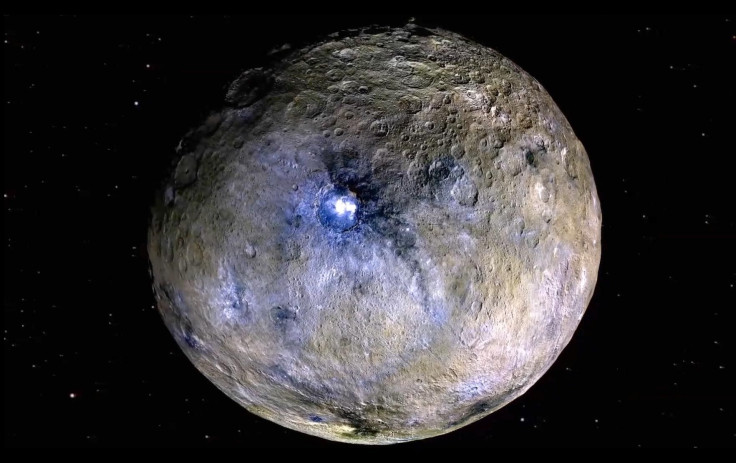Massive Operational Alien Vessel Spotted On Asteroid Ceres, UFO Expert Claims

KEY POINTS
- An alleged alien vessel was spotted on Ceres
- The UFO was about 75 kilometers long
- The alleged alien ship appears to be operational
A UFO expert claimed to have spotted a massive alien ship docked at one of the craters of the giant asteroid Ceres. Based on the expert’s descriptions, it seems the alleged alien vessel is still active and operational.
The strange sighting was made by Scott Waring of ET Data Base. He came across the image of the object while checking out Ceres using Google Maps.
Ceres is the largest asteroid in the main asteroid belt between Jupiter and Mars. With an estimated diameter of almost 950 kilometers, Ceres is often referred to as a dwarf planet.
As Waring was exploring the massive asteroid, he came across an image of a strange-looking object inside one of its craters. Upon closer inspection, he noticed that the object had a distinct triangular shape with certain prominent features.
Due to its appearance, Waring noted that the object was a massive alien vessel. Using the measuring feature of Google Maps, the UFO expert estimated that the alleged vessel was about 75 kilometers long.
Interestingly, Waring noted that the alien ship appeared to be hovering over the floor of the crater. This could mean that the vessel was still operational when the photo was taken. In addition, Waring said the vessel appeared to be attached to the wall of the crater. He thinks this part of the crater could be an alien structure that operated as a docking facility.
“I found a 75-km long ship in a crater on planet Ceres yesterday,” Waring wrote on a blog post. “The ship is in the photo above and clearly shows a craft landed inside the crater, but still hovering without touching the bottom. Also, it seems to be held by its wing attached to the crater wall, which I assume is a structure for loading and unloading.”
This isn’t the first time that Waring reported seeing alien objects on the dwarf planet. In June last year, the UFO expert claimed that he spotted hundreds of alien structures near the southern region of Ceres. He believes these structures were made by aliens to observe nearby planets.





















